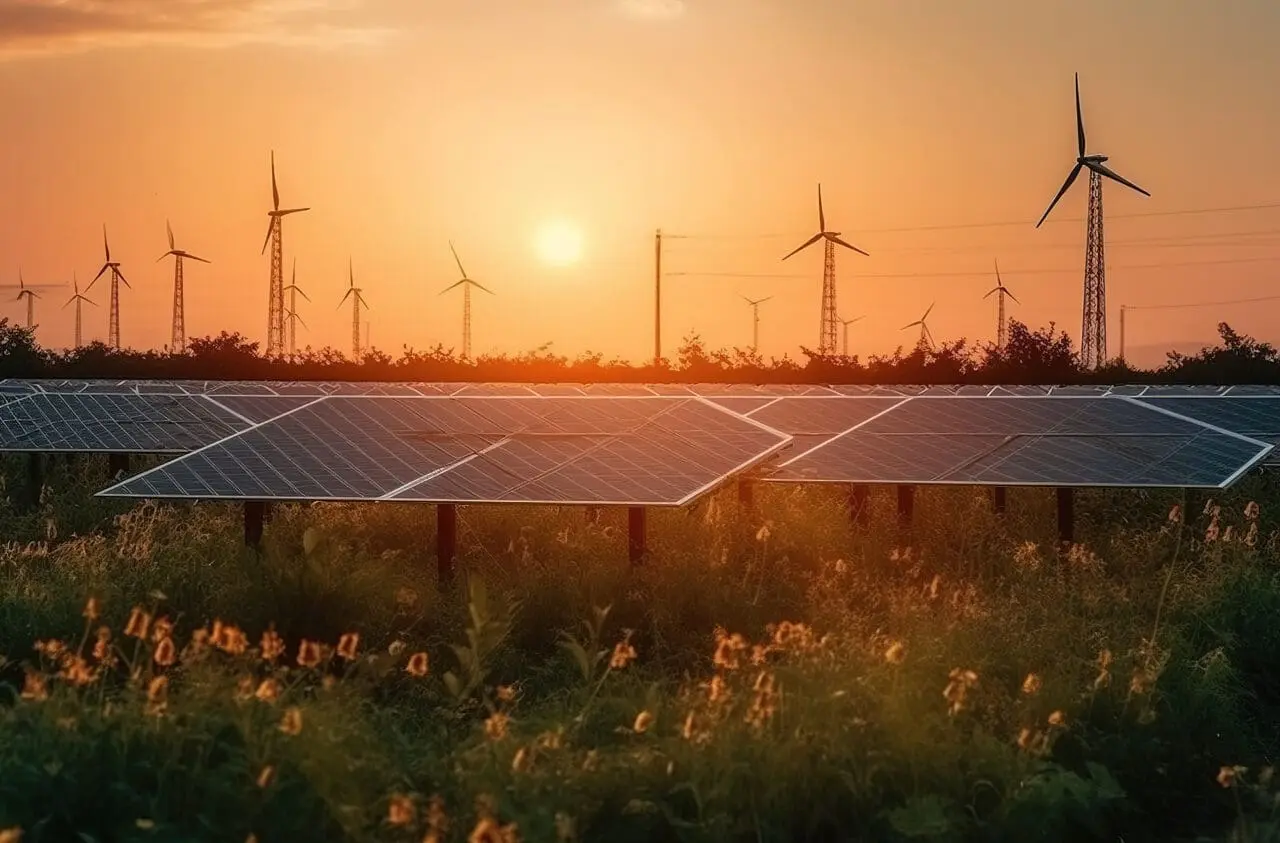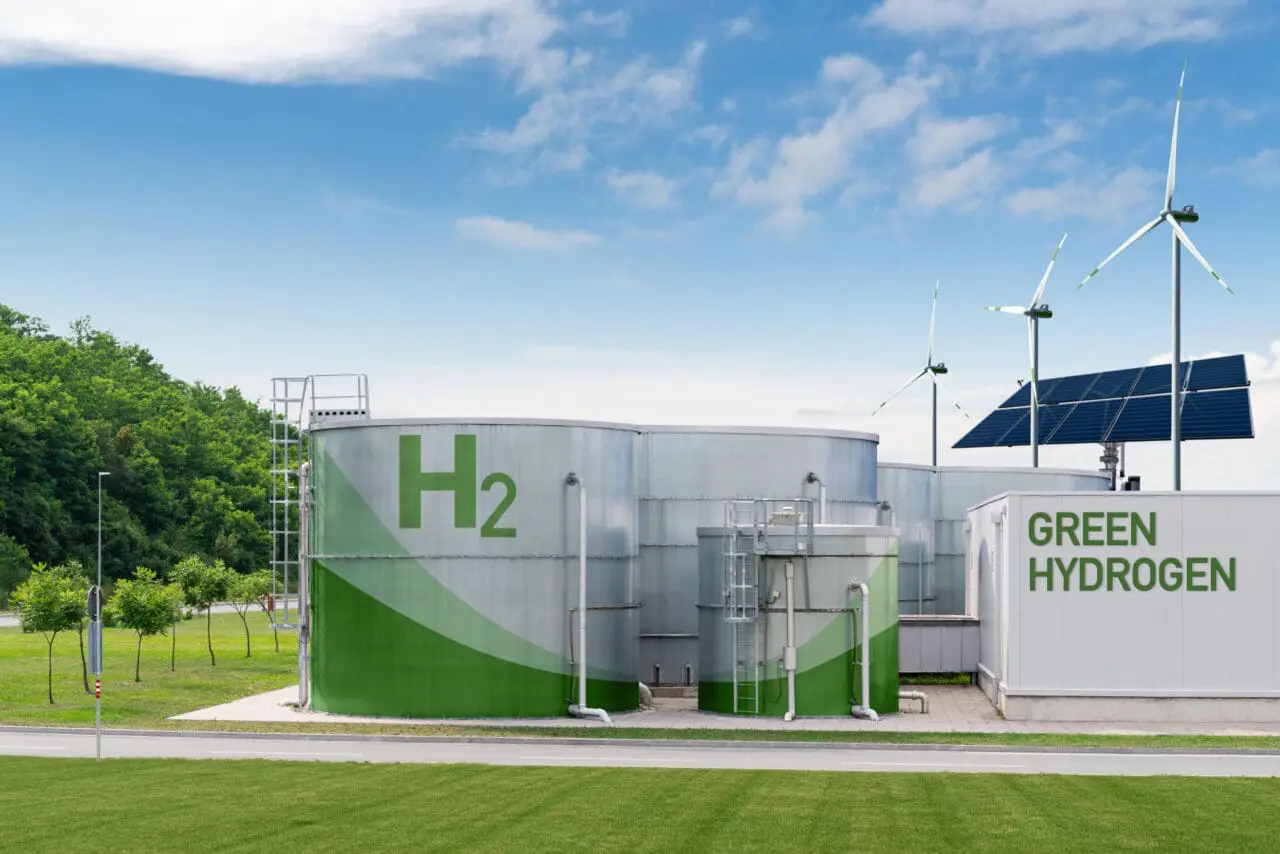

With global demand for renewable energy sources increasing, companies such as Lhyfe are turning to wind power to create green hydrogen. By harnessing the energy generated by offshore floating wind turbines to power electrolysers, Lhyfe is revolutionising green hydrogen production. These turbines are capable of producing large amounts of renewable energy and are a reliable and sustainable source for the production of green hydrogen. Using this approach, green hydrogen can be created in a much more efficient manner than traditional methods. This allows for a lower cost of production, as well as an increase in the amount of hydrogen that can be produced. Additionally, offshore floating wind-to-hydrogen turbines require minimal maintenance and are significantly more durable than traditional methods of producing green hydrogen. The ability to efficiently produce renewable energy from wind turbines has opened up many possibilities for companies such as Lhyfe. By utilizing this technology, they have been able to create green hydrogen at an unprecedented rate and with an unprecedented level of efficiency. This has allowed them to help meet the challenges of producing green hydrogen while also providing a reliable source of energy for use in various applications. Overall, offshore floating wind-to-hydrogen turbines are changing the way we produce green hydrogen. By harnessing the power of wind energy, companies such as Lhyfe are able to create renewable hydrogen in an efficient and cost-effective manner. This has opened up many new possibilities for green hydrogen production, and is helping to make renewable energy more accessible to everyone.
As the demand for renewable energy sources increases, companies such as Lhyfe are innovating new solutions to help make green hydrogen production a reality. By utilizing offshore floating wind-to-hydrogen turbines to power electrolysers, they have been able to create renewable hydrogen in an efficient and cost-effective manner. This has allowed them to help meet the challenges of producing green hydrogen while also providing a reliable source of energy for use in various applications. In addition to their innovative solutions, Lhyfe is actively working to make renewable hydrogen production more accessible to everyone. They are developing a number of different systems that allow users to easily produce green hydrogen from wind energy. These systems are designed to be easy to use, cost-effective, and require minimal maintenance. By making green hydrogen production more accessible, they are helping to make renewable energy sources more widely available for everyone. Overall, Lhyfe is leading the way in green hydrogen innovation. The solutions they have developed are helping to make renewable hydrogen production a reality and providing access to renewable energy for everyone. They are actively working to reduce the cost of production and increase the efficiency of green hydrogen production, allowing for a more sustainable future.
One of the most important benefits of harnessing wind energy to power electrolysers is its ability to provide a reliable and sustainable source of green hydrogen. By using offshore floating wind-to-hydrogen turbines, companies such as Lhyfe are able to create renewable hydrogen in an efficient and cost-effective manner. This has allowed them to help meet the challenges of producing green hydrogen while also providing a reliable source of energy for use in various applications. Furthermore, harnessing wind energy to power electrolysers can help reduce the cost of green hydrogen production. The wind turbines used are often less expensive than traditional methods, allowing for a lower cost of production. Additionally, they require minimal maintenance and are significantly more durable than traditional methods of producing green hydrogen. Overall, harnessing wind energy to power electrolysers provides many benefits that make renewable hydrogen production more accessible to everyone. By utilizing offshore floating wind-to-hydrogen turbines, companies such as Lhyfe are able to create renewable hydrogen in an efficient and cost-effective manner. This has allowed them to help meet the challenges of producing green hydrogen while also providing a reliable source of energy for use in various applications.
As the demand for sustainable energy sources continues to increase, offshore floating wind-to-hydrogen turbines are taking renewable energy use to the next level. These turbines harness the power of wind energy to create green hydrogen in an efficient and cost effective manner. By utilizing this technology, companies such as Lhyfe are able to produce renewable hydrogen with a higher level of efficiency than traditional methods. This has allowed them to help meet the challenges of producing green hydrogen while also providing a reliable source of energy for various applications. Offshore floating wind-to-hydrogen turbines have many advantages over traditional methods of producing renewable energy. They are highly efficient and require minimal maintenance, making them cost-effective and reliable sources of green hydrogen. Additionally, they are able to capture a higher output of wind energy than traditional turbines due to their unique design. This allows for more renewable hydrogen production with less power consumption, resulting in a lower overall cost of production. Overall, offshore floating wind-to-hydrogen turbines are helping to take sustainable energy use to the next level. By utilizing this technology, companies such as Lhyfe are able to produce renewable hydrogen in an efficient and cost-effective manner while also providing a reliable source of energy for various applications.
As the demand for renewable energy sources continues to increase, companies such as Lhyfe are exploring the potential of green hydrogen production using floating wind farms. By utilizing this technology, they are able to produce renewable energy in an efficient and cost-effective manner. Floating wind farms allow for larger turbines which can capture more wind power than traditional onshore turbines. This allows them to create higher amounts of green hydrogen with less power consumption, resulting in a lower overall cost of production. The use of floating wind farms also has the potential to reduce the environmental impact of producing renewable energy. By using this technology, companies are able to capture more wind power without having to construct large-scale onshore infrastructure projects. This reduces their carbon footprint and allows for more sustainable energy production. Overall, companies such as Lhyfe are exploring the potential of green hydrogen production using floating wind farms. By utilizing this technology, they are able to produce renewable energy in an efficient and cost-effective manner while also reducing their environmental impact.
Producing green hydrogen presents a number of unique challenges that must be met in order for it to be successful. One of the biggest challenges is affordability, as renewable hydrogen production has historically been expensive. Additionally, the technology used to produce renewable hydrogen often requires a significant amount of maintenance and upkeep, making it difficult for companies to keep up with demand. Fortunately, companies such as Lhyfe are meeting these challenges by utilizing offshore floating wind-to-hydrogen turbines. By harnessing the power of wind energy to power electrolysers, they are able to reduce the cost of green hydrogen production while also requiring minimal maintenance and upkeep. This has allowed them to help meet the challenges of producing green hydrogen while also providing a reliable source of energy for use in various applications.
Offshore floating wind-to hydrogen turbines provide many benefits to companies that are looking to produce renewable energy. By utilizing this technology, they are able to capture more wind power than traditional onshore turbines, resulting in a higher output of green hydrogen with less power consumption. This reduces the cost of production and makes it more affordable for companies to produce renewable energy. Additionally, offshore floating turbines require minimal maintenance and upkeep, reducing the amount of resources that need to be devoted to keeping them operational. The use of offshore floating wind-to-hydrogen turbines also has the potential to reduce the environmental impact of renewable energy production. By utilizing this technology, companies are able to capture more wind power without having to construct large-scale onshore infrastructure projects. This reduces their carbon footprint and allows for more sustainable energy production. Overall, offshore floating wind-to-hydrogen turbines provide many advantages when it comes to producing renewable energy. By harnessing the power of wind energy to create green hydrogen, companies such as Lhyfe are able to reduce the cost of production while also reducing their environmental impact. This has allowed them to help meet the challenges of producing green hydrogen while also providing a reliable source of energy for use in various applications.
As the demand for renewable energy sources increases, it is important to investigate the potential environmental impact of producing green hydrogen. Producing hydrogen using offshore floating wind turbines involves capturing and converting wind power into a fuel source which can be used in various applications. This technology has many advantages when it comes to producing renewable energy, but it is important to evaluate any potential environmental impacts that could result from its use. One of the concerns surrounding green hydrogen production is the effect it may have on marine life in the area around offshore floating wind turbines. While there is still research being done to determine the full extent of this impact, studies have shown that some species of fish and marine mammals may be at risk due to the noise and vibrations emitted from these turbines. Additionally, there is a potential for marine debris from these turbines to become lodged in coral reefs and other ocean habitats, leading to long-term damage to the environment. Fortunately, companies such as Lhyfe are taking measures to reduce the impact of their offshore floating wind-to-hydrogen turbines on marine life and the environment. By using quieter and more efficient turbine designs, they are able to minimize any potential disruption caused by the turbines while still producing green hydrogen effectively. Additionally, Lhyfe has adopted a number of safety protocols in order to ensure that any debris from their floating wind farms is safely removed from the ocean and disposed of properly.
Through their innovative approach to renewable energy, Lhyfe is helping to make offshore floating wind-to-hydrogen turbines a reality. By utilizing the latest engineering and technology available, they are able to produce green hydrogen at a lower cost and with minimal maintenance. Additionally, they have adopted various safety protocols to ensure that their turbines are operating in an environmentally responsible manner. Lhyfe is equipped with the necessary equipment for producing green hydrogen using offshore floating wind turbines. By harnessing the power of wind energy, they are able to efficiently produce large quantities of green hydrogen without increasing their carbon footprint. Additionally, they have dedicated teams of engineers and technicians who are devoted to maintaining the turbines and ensuring that they are operating safely and efficiently. Overall, Lhyfe is helping make offshore floating wind-to-hydrogen turbines a reality for companies looking to produce renewable energy. Through their dedication to innovation and sustainability, they are providing a reliable source of green hydrogen that is both cost-effective and environmentally friendly. By utilizing this technology, they are helping to make renewable energy production more accessible and affordable for businesses and consumers alike. In addition to producing green hydrogen, Lhyfe also offers a variety of services related to the development of offshore floating wind turbines. They have experts in areas such as engineering, construction, and maintenance who are devoted to helping companies maximize the efficiency of their wind energy projects. Additionally, they provide consulting services to help businesses design turbines that are optimized for their desired application. By utilizing all of these resources, Lhyfe is helping to make offshore floating wind-to-hydrogen turbines a reality. By providing a reliable source of green hydrogen and offering comprehensive support for wind energy projects, they are helping to make renewable energy production more accessible and affordable. Through their commitment to innovation and sustainability, Lhyfe is making a positive impact on the environment while providing a profitable business opportunity for companies looking to produce green hydrogen.


